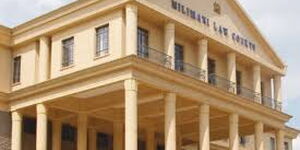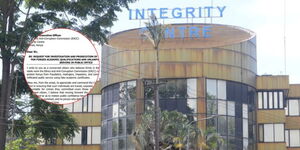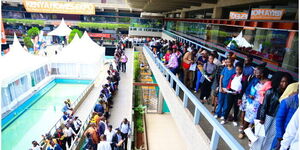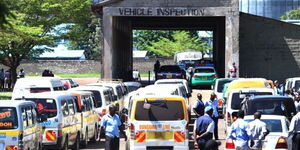The recent confusion over Nyayo National Stadium being announced as ‘sold out’ by the Football Kenya Federation (FKF) but later issuing a contradictory statement sparked a heated debate over what a sold out stadium really means.
In the aftermath of the melee and chaos witnessed during the Kenya vs Gabon World Cup qualifier match on Sunday, March 23, FKF released a statement announcing that the stadium was actually not fully sold out.
Leading up to the game, reports from FKF indicated that the federation had sold out tickets to the 22,000 capacity stadium, something that would have been in breach of Confederation of African Football (CAF) rules.
However, FKF President Hussein Mohammed sought to clarify these reports, indicating that of the available 18,000 regular tickets, the Federation stopped selling at 15,968. Further, 1,131 VIP tickets were sold out of 1,400, while 107 VVIP tickets were sold.
Even so, to the naked eye, the stadium looked full to the brim with spectators who managed to watch the match live attesting to this. Besides the fans who were at their seats, others were on the terraces watching the game throughout the 90-minute game.
The excess numbers were attributed to security lapses that saw spectators gain entry into the stadium without purchasing tickets.
So what is a ‘sold out’ stadium, and what do CAF regulations say about them? As per Chapter Four, Article 15 of the CAF Safety and Security Regulations regarding ticket sales, all tickets to be produced for a match must not be more than the maximum safe capacity of the stadium for the match. Hence, match organisers must ensure that ticket production does not exceed the stadium's maximum safe capacity.
What is the maximum safe capacity of a stadium? The maximum safe capacity of a stadium is calculated through four parameters, where any one can be the maximum safe capacity.
The first parameter, holding capacity, refers to the number of people a stadium can safely accommodate. This is based on the actual number of usable seats, excluding those obstructed by objects, restricted by view, or allocated for security and segregation purposes.
Second is entry capacity, which is the number of people who can pass through turnstiles or controlled entry points within an hour. It depends on the number and distribution of entry points, directional signage, spectator familiarity, accessibility provisions, and security checks.
The third parameter is exit capacity which is the number of people who can safely leave the viewing area under normal conditions within ten minutes. Factors include the number and size of exit gates, directional signage, spectator familiarity, and the width and layout of stairways, escalators, and gangways.
The final parameter is emergency evacuation capacity, which is the number of people who can safely reach a designated safe area within a set evacuation time. This depends on available routes and the assessed level of risk.
The maximum safe capacity of a stadium section is determined by the lowest of the aforementioned figures. Once all sections, including VIP areas and hospitality suites, are assessed, the stadium’s total safe capacity is established.
While official numbers for the maximum safe capacity for Nyayo National Stadium are yet to be established, one could draw parallels to the required safe capacity and the tickets made available for sale as well as the cap introduced during the sale of tickets. This would put the maximum safe capacity of the 22,000 seater Nyayo Stadium at the region of 15,000 to 18,000.
This could now inform the statement released by FKF as they sought to clarify their earlier remarks on Nyayo being sold out. When a stadium is fully sold out, it can bring dire consequences to the body operating it or the country that it’s located in.
Top of this is safety hazards where exceeding the safe capacity increases the risk of overcrowding, which can result in accidents, crowd crushes, and hindered emergency evacuations.
CAF may impose fines or other disciplinary actions on football associations or clubs that violate safety regulations. For instance, the Football Association of Zambia was fined USD 20,000 (Ksh2.5 million) for failing to maintain order during a match.
Also, persistent non-compliance can lead to CAF declaring a stadium unfit for hosting international matches, forcing teams to play home games in alternative venues, often in other countries. This not only affects team performance but also deprives local fans of watching their teams play live.
Further, in the event of incidents or accidents due to overcrowding, the responsible football association or club could face legal liabilities, including lawsuits from injured parties.
To avoid these consequences, it's crucial for stadium management and event organizers to adhere strictly to CAF's safety and security regulations, ensuring that ticket sales do not exceed the established maximum safe capacity.












